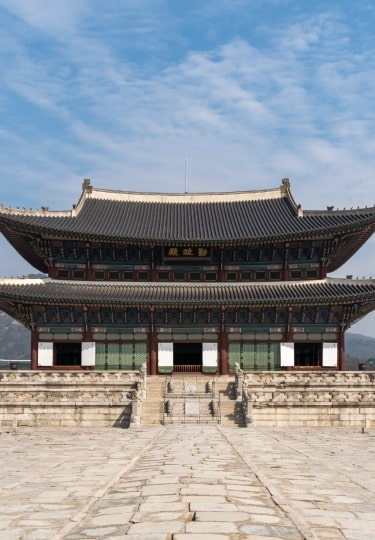The best time to visit Seoul, the capital of South Korea, is in the spring and the fall, when the weather is milder and the rainfall is low.
Seoul has a continental climate with considerable extremes. Winters are bitterly cold and often snowy, while July and August bring intensely hot, humid weather, when the monsoon rains arrive.
The transitional months, April to June and September and October, are delightful; not too cold, and not too humid. Either of these periods is a great time to go to Seoul. Come in April for the cherry blossom and in October for the fall colors.
Whenever you time your visit, though, Seoul is a lively, dynamic city with plenty of attractions to enjoy if the weather is inclement, not to mention malls, restaurants, and markets.
Visiting Seoul By Season
Summer
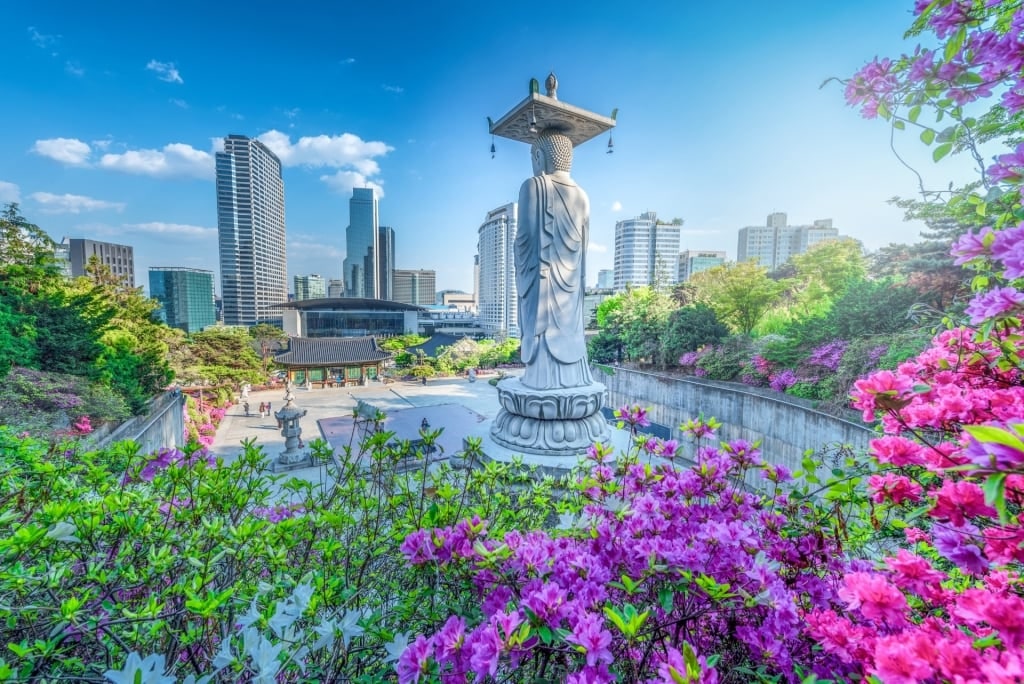
Bongeunsa Temple
Later in summer is not the best time to visit Seoul as it’s monsoon season. July and August are subject to torrential rains, high temperatures, and intense humidity. During these months, locals retreat indoors, enjoying the air conditioning of shopping malls and museums, or head for the coast to cool off. August is school vacation season, so domestic tourism is at its peak.
June, however, is a good time to go to Seoul. The days are warm, with average highs of 73°F (22.9°C), and the nights mild. While rainfall is beginning to increase, it’s minor compared to July and August, with an average of 5.1 inches (130mm).
Fall
Fall is a wonderful time to visit Seoul. The summer rains have passed by September and the temperatures are still pleasantly warm. Expect average daily highs of 79°F (26.1°C) and six hours of sunshine per day. Trees in the parks all over the capital begin to assume their fall colors by October.
October and November are typically mild and dry, but by November, nighttime temperatures are averaging below freezing at 22.5°F (-5°C), so wrap up warm.
Winter
Winters in Seoul are cold and dry, chilled by icy winds from the Asian continent. The temperature typically hovers around freezing during the day. If precipitation falls, it comes as snow, dusting the city in white, which is an especially enchanting sight. But snow isn’t guaranteed; December, January, and February are actually the driest months of the year. Dress up warm if you plan to visit in winter.
Korea celebrates the Lunar New Year, so expect lavish parades and parties if you’re in Seoul when seollal falls, usually in January or February.
Spring
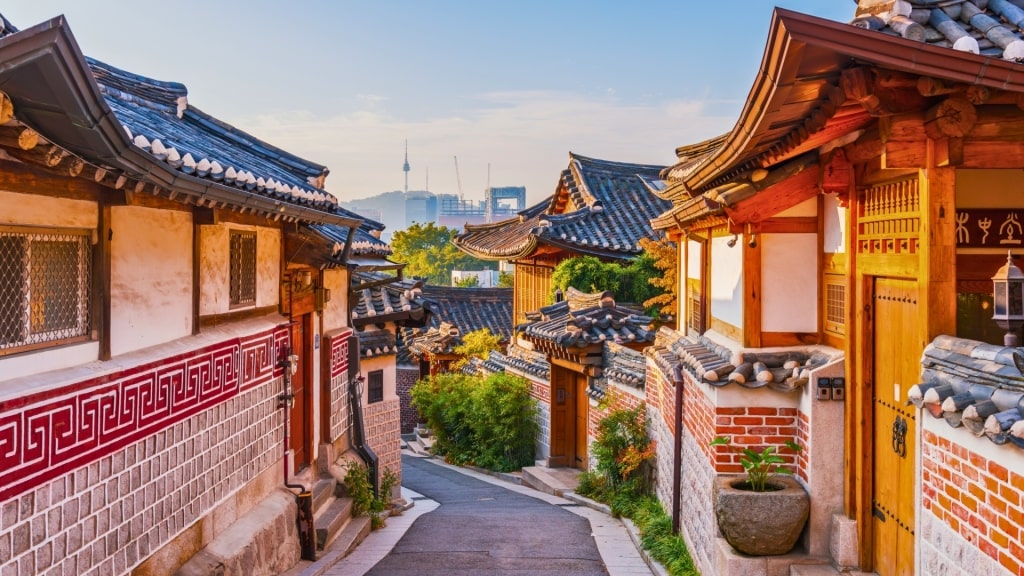
Bukchon Hanok Village
Temperatures begin to increase in spring. March and April can bring an unwelcome phenomenon called yellow dust, or hwangsa, a dusty cloud that blows in from the Mongolian desert and drapes the city in a yellow haze.
When there’s no yellow dust, though, spring in Seoul is especially lovely, with the cherry trees in blossom in April. May is arguably the best time to go to Seoul for wandering around temples, browsing street markets, and enjoying the city’s parks.
The days are getting longer and average daily highs are 74°F (23.5°C), with an average of seven hours of sunshine per day. Evenings are cool, especially in early May, when nighttime temperatures can drop to 48°F (9°C), so bring a wrap if you’re visiting then.
When Is Rainy Season?
Seoul’s rainy season is during July and August, when the monsoon arrives. July is the wettest month of the year, with an average of 16.3 inches (415mm) of rainfall, while August brings 13.8 inches (350mm). July also has mostly cloudy days.
Rainfall decreases as fall arrives; by September, there’s just 5.5 inches (140mm) of rain on average, making this a much better time to visit.
When Is High Season?
The busiest months in Seoul are the late spring, so April, May, and to an extent, early June, as well as the cooler fall months. September and October are extremely popular months, when the trees around the capital assume their glorious autumn hues and the humidity of summer has passed.
Expect more crowds during the high season, but don’t be put off; Seoul is a big city with an enormous range of attractions, and it absorbs visitors very efficiently.
When Is Shoulder Season?
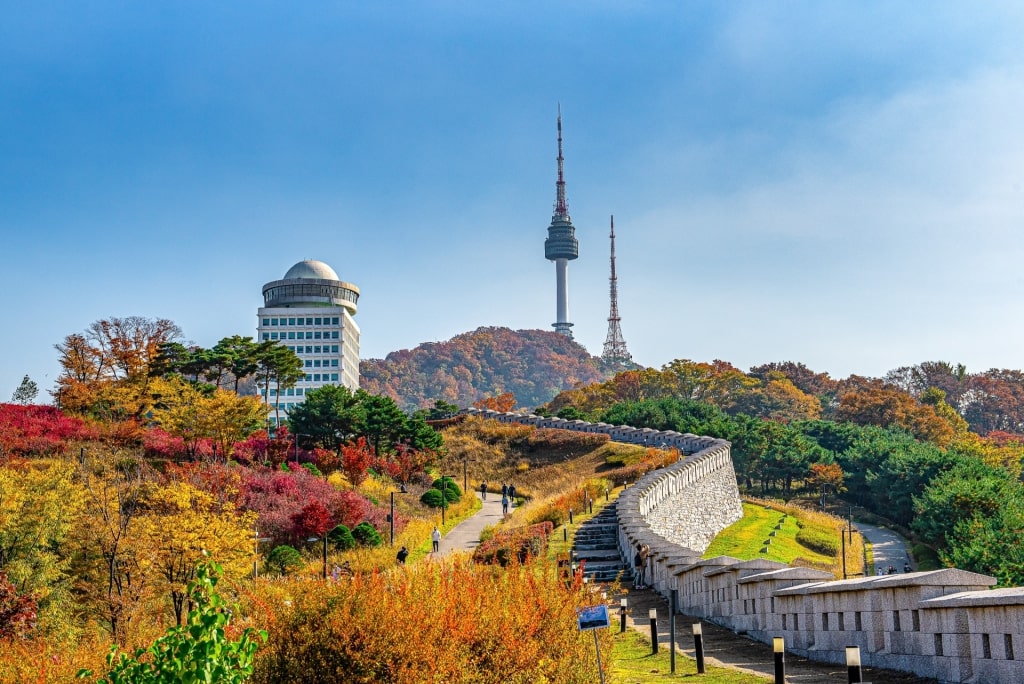
N Seoul Tower
Shoulder season in Seoul is mid-June, between the dry spring months and the beginning of the monsoon, and late fall, when temperatures are beginning to drop. June is a particularly good month to visit if you enjoy warm weather but fewer crowds.
November is also a good time to visit as the fall peak has finished but the trees are usually still sporting their oranges, scarlets, and yellows, at least until the middle of the month.
When Is Low Season?
Low season in Seoul is summer, particularly July and August, when the monsoon rains come. These are the months when it’s too hot and humid to spend much time outside. Conversely, as August is school vacation month, this is high season on the country’s coastlines, where the weather is more bearable.
December and January are also low season months, albeit more pleasant, when the city can be cloaked in snow and the aroma of roasted chestnuts fills the air. The weather can be bitterly cold, though, so unless you are coming for winter sports or intend to spend most of your time inside, this is not the best time to visit.
Read: Best Things to Do in Seoul
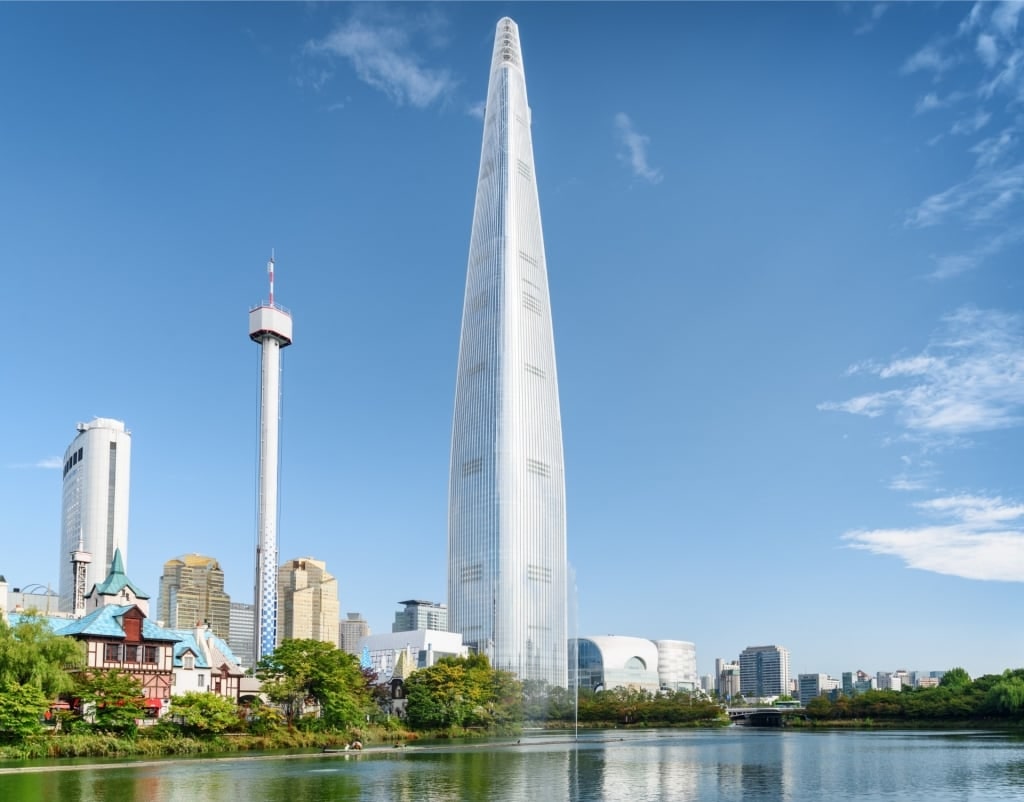
Seoul
Do you want to discover South Korea’s dynamic capital for yourself? Browse our cruises to Seoul and plan your Asian adventure.
